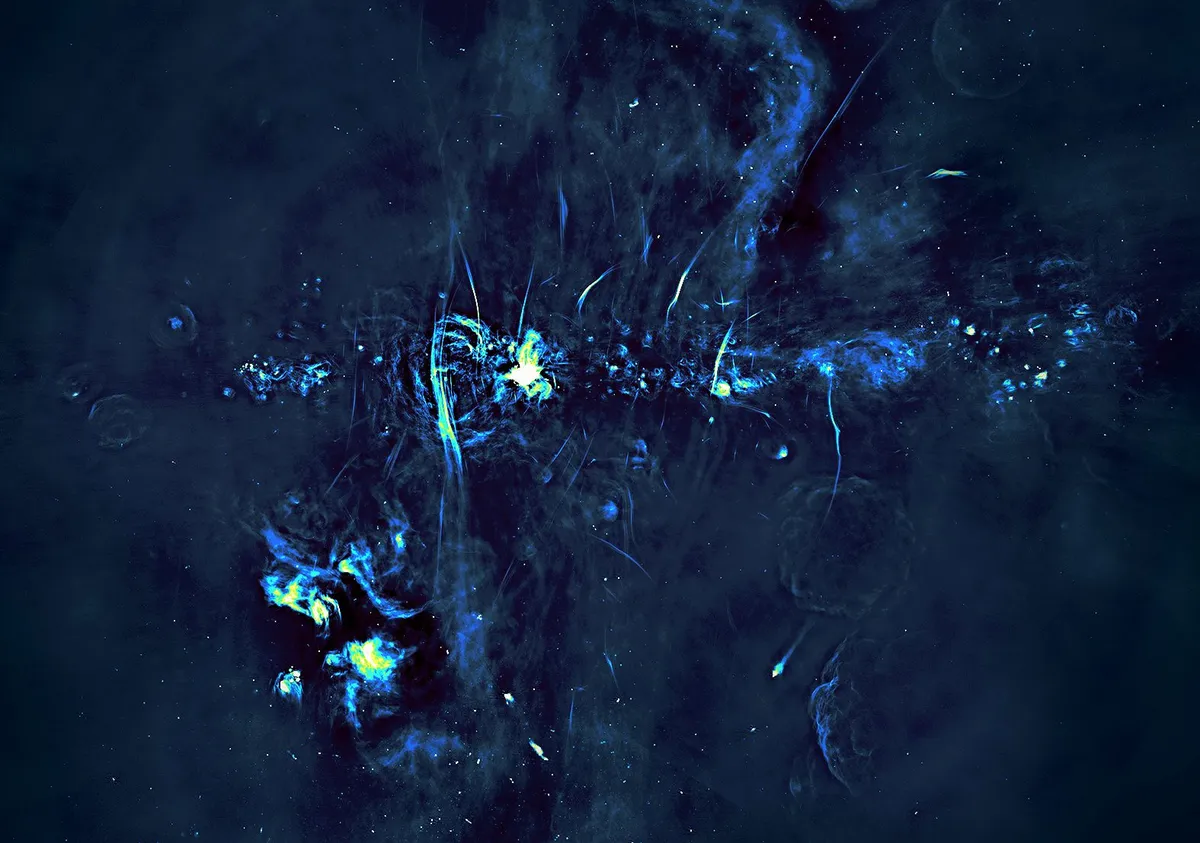The fearsome reputation of black holes as merciless devourers of all they encounter, bequeathed by science fiction, isn’t always deserved. The supermassive black hole at the centre of our Galaxy sits there meekly, with no trace of menace to the stars which orbit it.
But a paper led by The University of Sydney’s Josh Bland-Hawhorne adds to the growing pile of evidence that such calm is only temporary, and that 3.5 million years ago the centre of the Milky Way may have looked very different.
What’s remarkable is that this new evidence hasn’t come from staring at the Milky Way’s centre itself, but instead looking away from it.
Read more from Chris Lintott:
- Observing spots on distant stars
- Black hole jets may be more unpredictable than thought
- Speeding star reveals the secrets of the Milky Way
The team used the Hubble Space Telescope to identify distant quasars which happened to lie behind a feature called the Magellanic Stream.
The stream stretches across an arc that covers more than half the sky, and its composition and position suggest that it came from one of the two Magellanic Clouds, our Galaxy’s largest satellite systems.
The stream seems to be the result of the gravitational dance the two Clouds have completed over the years, as they orbit and interact with the larger Milky Way.
As light from background quasars passes through the stream en route to us, it is absorbed by the gas; the details of that process tell us about the state of the stream, and there are surprises in store.
For much of its length, it turns out that the stream’s gas is ionized (excited) by some unknown source. We need to find something capable of irradiating this remote gas with high-energy radiation to explain what’s seen.
So what’s the source? One possibility would be luminous X-ray sources in the Large Magellanic Cloud, which is a large galaxy in its own right, but the geometry of the ionized parts of the stream doesn’t seem to fit.

Instead, the authors suggest that the Milky Way lived through a period when its black hole was growing, accreting material which would build up in a hot, bright accretion disk that is absent today.
The Milky Way’s central black hole must have been accreting at a substantial fraction of the Eddington Limit, the theoretical maximum rate at which such an object in normal circumstances can grow.
Our Galaxy, seen from the outside, would have been a Seyfert, firmly classified as an active galaxy.
This picture fits other recent discoveries including the presence of the ‘Fermi bubbles’, enormous structures centred on the Galactic centre that may represent a shock wave from this violent part of our past, still heading out into space.
And if such an event happened in the last few million years, then it’s unlikely to have been a one-off. Galaxies can change from calm dormancy to dramatic activity rapidly.
This is the key to understanding the outstanding mysteries about how galaxies and their black holes grow together.
Chris Lintott was reading The large-scale ionization cones in the Galaxy by Joss Bland-Hawthorn et al. Read it online here.
This article originally appeared in the December 2019 issue of BBC Sky at Night Magazine.
